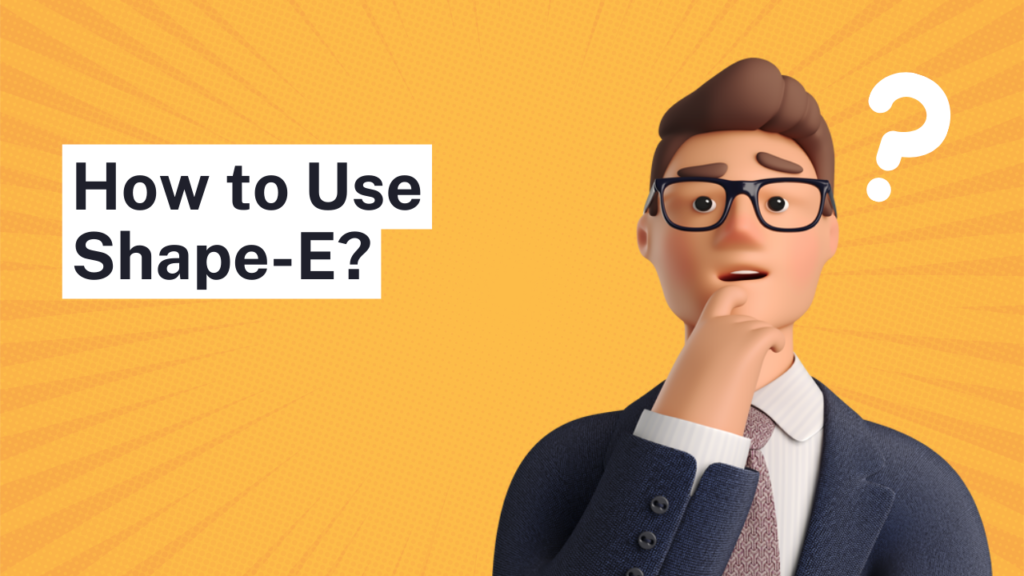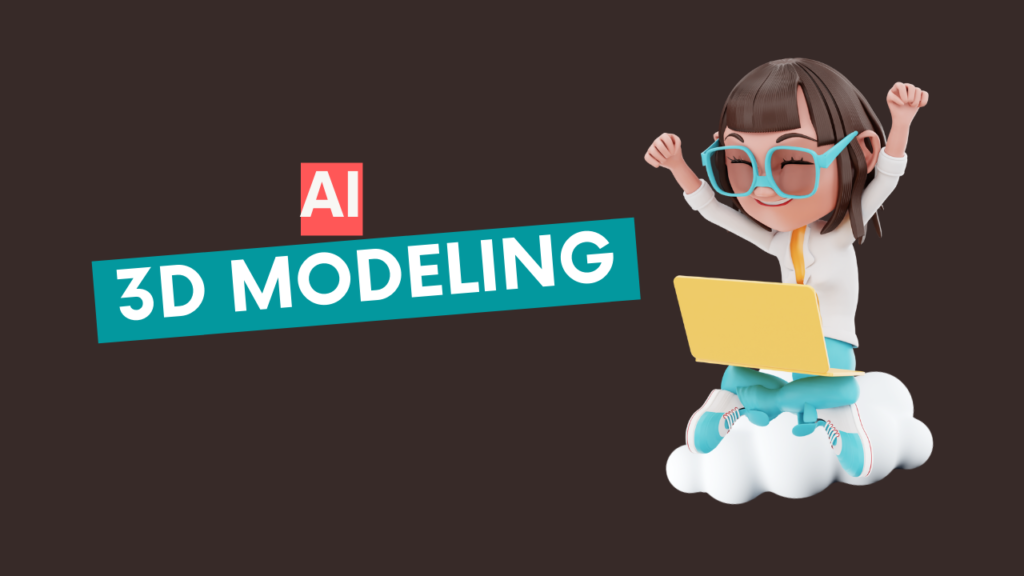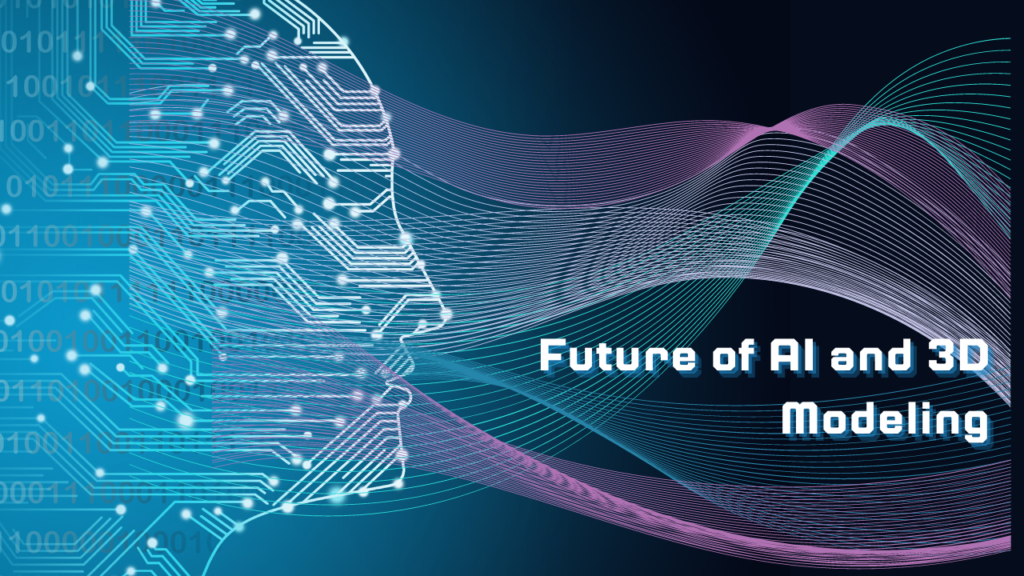The field of artificial intelligence (AI) keeps expanding. Shap-E is an advanced tool that was just introduced by OpenAI. Imagine being able to shape and manipulate 3D objects, such as complicated characters or complex constructions, with plain language descriptions.
Shap-E is an advancement in the 3D manipulation space. 3D field has depended on specialist software and technological know-how. But with Shap-E, anyone can use the simple words to realize their 3D visions. This article sets the stage for thorough examination of Shap-E, analyzing features, uses, and the future prospects.
To avoid AI detection, utilize Undetectable AI. It can do it in a single click.
Shap-E

OpenAI’s Shap-E AI model creates 3D models from text or image inputs. It opens up new opportunities for various industries, including gaming, design, and education, and is intended to aid in the creation of 3D assets. Shap-E is a conditional generative model that produces implicit function parameters.
These parameters can be displayed as neural radiance fields or textured meshes. Shap-E generates realistic and varied 3D models in a couple of seconds by analyzing text or image inputs. Its goal is to render 3D modeling approachable and effective for a range of industries and applications by streamlining the process.
Shap-E Technology
Shap-E’s basic technology is divided into two stages: conditional diffusion model training using the encoder’s outputs, and training an encoder that maps 3D assets to an implicit function’s parameters. Shap-E can produce intricate and varied 3D assets with speed and quality after being trained on a sizable sample of linked 3D and text data.
Shap-E models a multi-representation output space, but converges faster and yields comparable sample quality than Point-E, an explicit generative model over point clouds.
How to Use Shap-E?

OpenAI’s Shap-E is an AI model that builds 3D models from text or images. Users can access the model on GitHub, set it up, and run it to build 3D objects. Go to the OpenAI GitHub site to access Shap-E. You will find the files and resources required to execute the model.
The repository includes sample notebooks that show you how to create 3D models conditioned on text prompts or synthetic view images, along with documentation to assist you understand how the model operates. You should install required dependencies, including Blender, Jupyter Notebook, and Python, before launching Shap-E.
After the environment is configured, run the Shap-E repository in a cloud environment such as Google Colab or clone it to your local computer. Next, create 3D models based on text prompts or synthetic view images by following the detailed instructions found in the sample notebooks, such as sample_text_to_3d.ipynb and sample_image_to_3d.ipynb.
Applications of Shap-E

Shap-E, an AI model created by OpenAI, has the potential to have a substantial impact on a number of industries. We will examine the various uses of Shap-E, including gaming, simulation, visualization, AR/VR, design, education, and medical.
- Shap-E’s capacity to produce 3D content for simulation, gaming, visualization, and augmented and virtual reality (AR/VR) settings is among its noticeable uses.
- For inexperienced designers, Shap-E can be a helpful tool. Shap-E may help newbies grasp the principles of 3D design and offer a foundation for additional refinement and customization.
- Educators might utilize Shap-E to create 3D representations of historical items, scientific buildings, or mathematical concepts.
- Shap-E might be utilized to make 3D models of medical devices or anatomical structures in the medical field.
3D Modeling and AI

The advent of AI-assisted 3D modeling has sparked concerns about the technology’s potential effects on the 3D modeling sector. Although AI has demonstrated encouraging potential for 3D model generation, you should weigh the benefits and drawbacks of AI-generated 3D models.
Advantages of AI-Assisted 3D Modeling
Compared to conventional 3D modeling methods, AI-assisted 3D modeling systems, such as Shap-E, have several advantages. It can produce 3D models faster, save time and money, and facilitate the creation of content for a variety of industries, including simulation, gaming, visualization, and AR/VR.
AI can help inexperienced designers create 3D models through offering suggestions and enhancing the design process as a whole.
Disadvantages of AI-Assisted 3D Modeling
AI-generated 3D models have drawbacks despite their benefits. The models might not be appropriate for every application and might not include high-resolution features. AI-generated models could not always accurately depict the provided input, when handling ambiguous or complex descriptions.
Dall-E and Point-E

OpenAI’s Point-E model was developed with the goal of producing low-fidelity 3D point clouds from text inputs. Point-E level of detail and quality of its output was limited. DALL-E is an AI model that, instead of producing 3D models, uses text inputs to create 2D graphics.
Building on the work of these previous models, Shap-E provides faster convergence, precise, and detailed 3D model production. OpenAI’s Shap-E AI model creates 3D models from text or image inputs. It has the power to transform the 3D modeling sector by improving accessibility and productivity in the production of 3D assets.
Future of AI and 3D Modeling

Artificial intelligence (AI) technologies such as Shap-E are evolving, enabling it possible to create 3D models from text or images that are precise and detailed. As these AI models advance in sophistication, new uses in a variety of sectors, such as gaming, architecture, and design, may be made possible.
When AI improves at converting 2D images into 3D objects, this may present new opportunities for designers and artists, enabling them to produce 3D models faster. Ethical issues should be addressed to guarantee responsible growth. With the growing realism of AI-generated 3D models comes the possibility of misapplication.
Technology should be regulated to avoid being misused. AI has the potential to change the 3D modeling industry. AI-driven tools such as Shap-E can help both beginners and designers create 3D models with less human labor. This might result in effective 3D modeling procedures.
Conclusion
Shap-E has the potential to democratize 3D production. Shap-E has a wide range of possible uses. We may anticipate created shapes with higher levels of realism and detail as technology advances. The prospects for the future are endless, including the possibility of smooth interaction with AI tools.
Shap-E encourages artistic creativity. The capacity of Shap-E to create 3D environments using words opens up new possibilities. This technology has the potential to change the 3D creation scene.
Are you prepared to embrace the use of text to manipulate 3D objects in the future?
FAQs: OpenAI Shap-E
What is OpenAI Shap-E?
OpenAI Shap-E is an AI technology developed by OpenAI that focuses on generating complex and diverse 3D assets using conditional generative models based on implicit functions.
How does Shap-E generate 3D objects?
Shap-E uses conditional generative models to generate 3D objects based on text or images inputs, leveraging neural radiance fields and diffusion techniques.
What type of data does OpenAI Shap-E use?
OpenAI Shap-E utilizes a large dataset of paired 3D and text data to generate 3D assets in a diverse and efficient manner.
Can Shap-E generate conditional 3D implicit functions?
Yes, OpenAI Shap-E can generate conditional 3D implicit functions by determining the parameters of implicit functions based on input conditions.
What sets OpenAI Shap-E apart from AI technologies?
OpenAI Shap-E stands out due to its ability to generate complex and diverse 3D assets using conditional generative models and implicit functions with precision and efficiency.
Is the code for OpenAI Shap-E publicly available?
Yes, the code for OpenAI Shap-E is available on GitHub, allowing developers to explore and utilize the conditional generative model capabilities.
What role does AI technology such as Shap-E play in 3D printing?
AI technologies such as Shap-E can enhance the 3D printing process by generating 3D models and optimizing the printing parameters.


